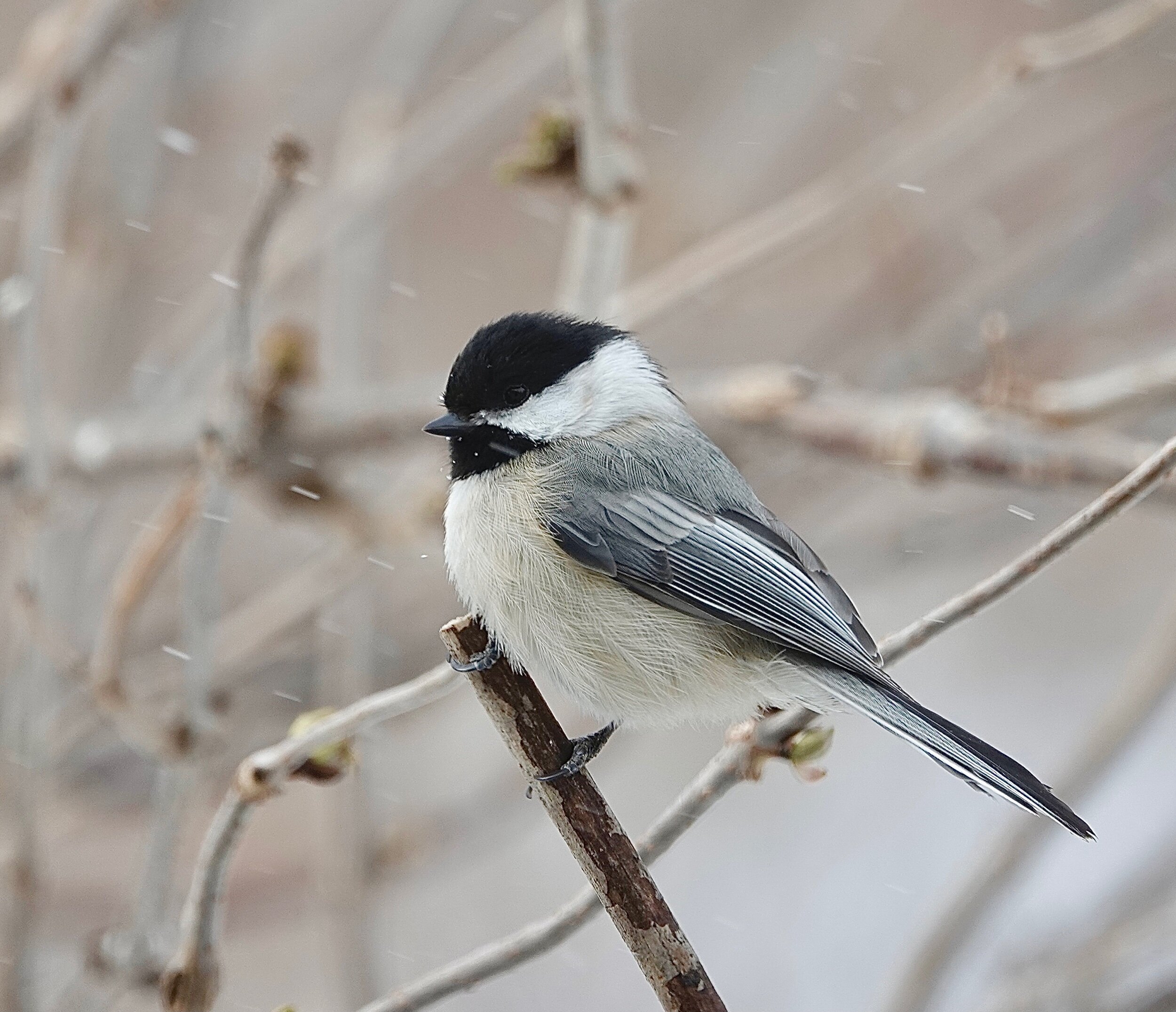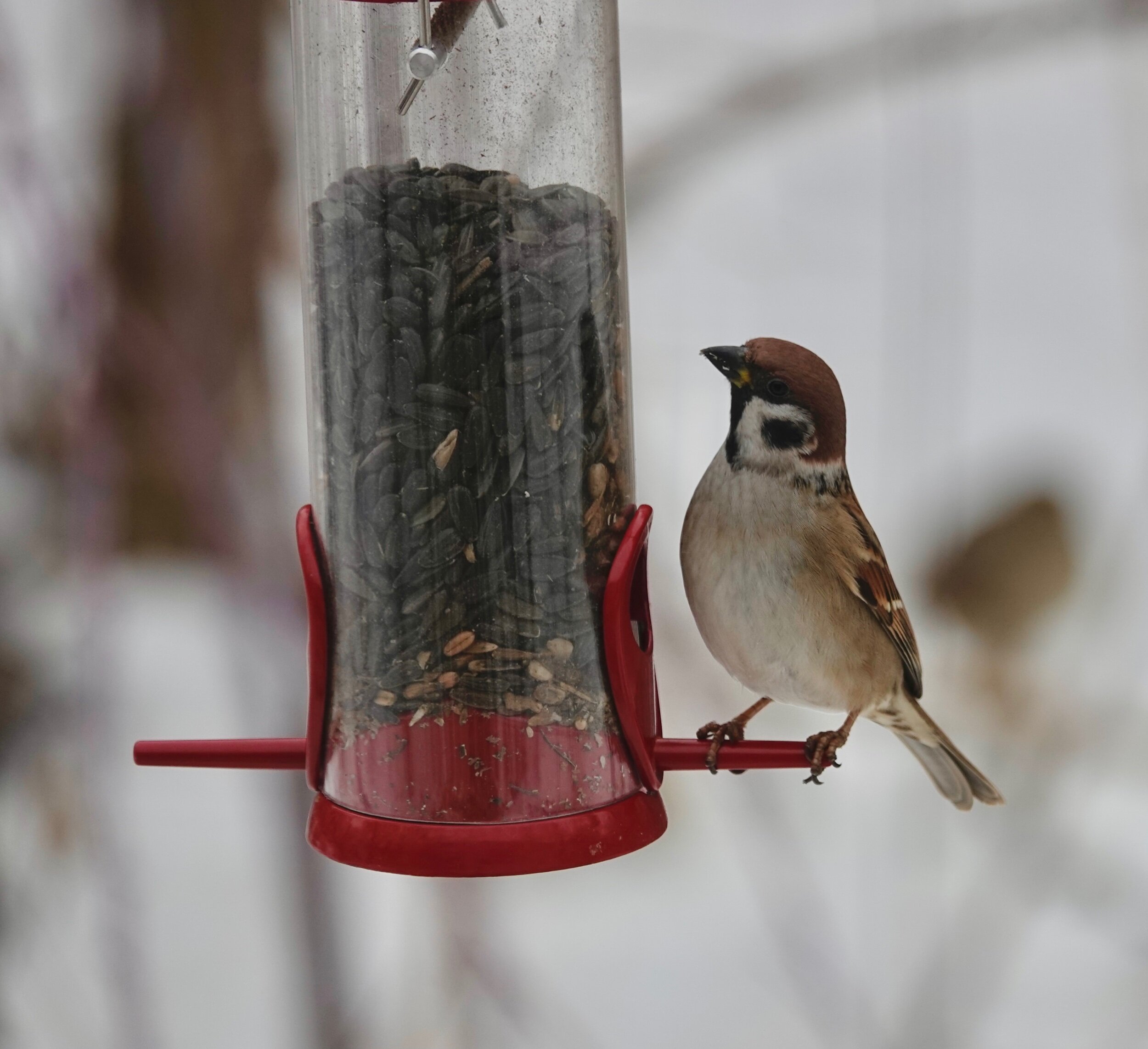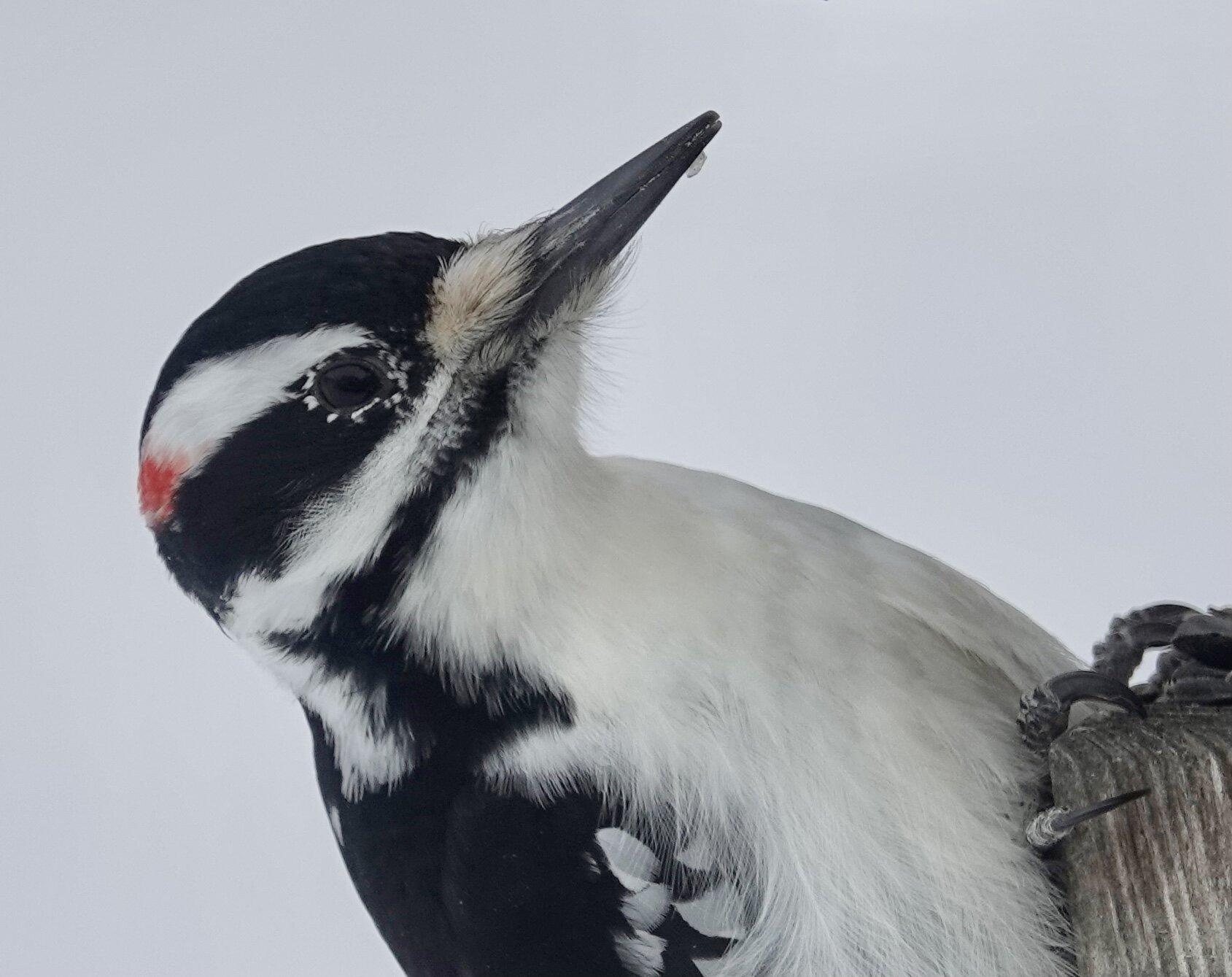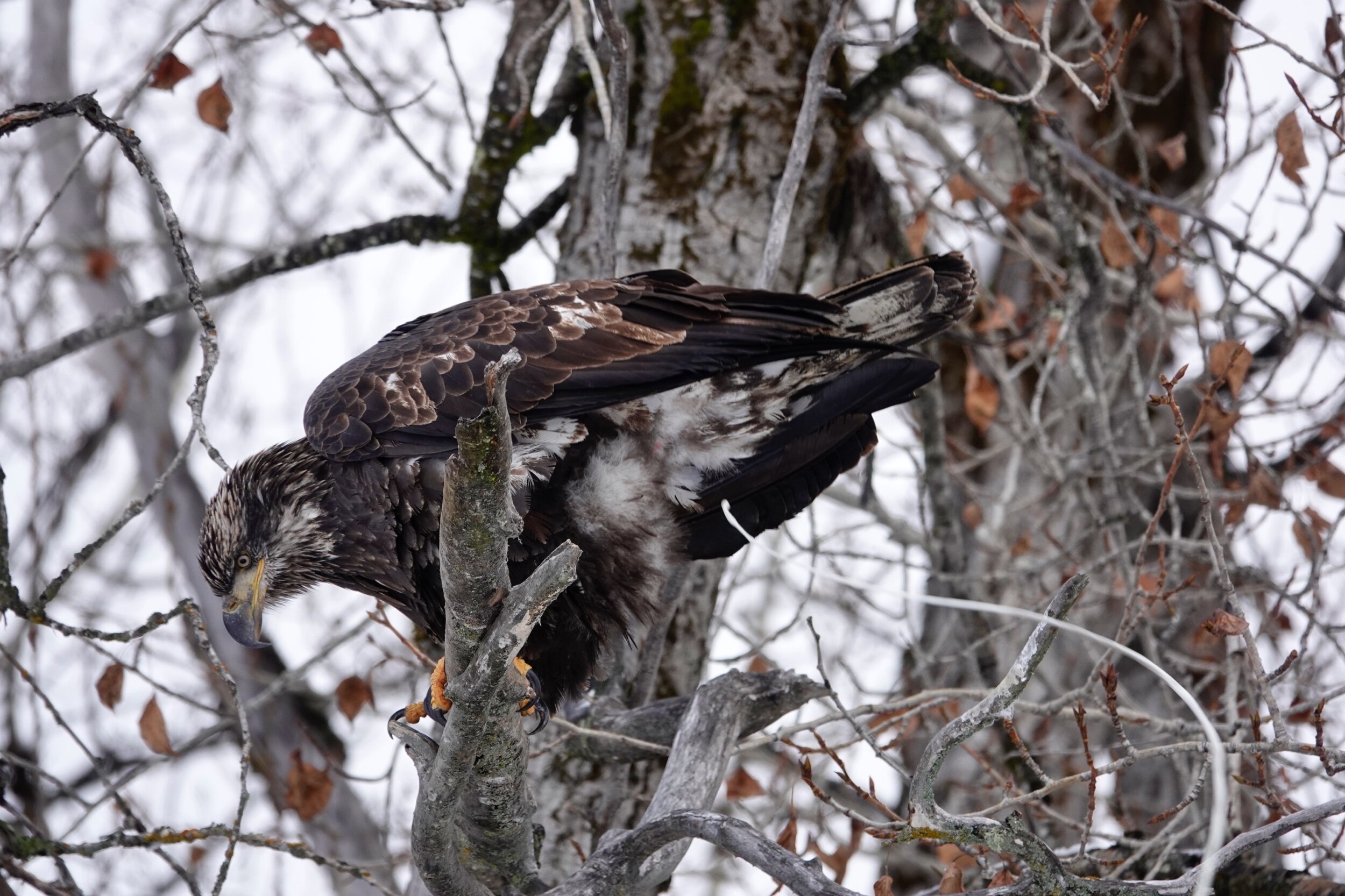Naturally
It was one above zero. Crows gathered in the woods near my window. It was a murder in the first degree.
A friendly chickadee landed on a feeder while I was filling it. It snacked on nyjer seeds. I don’t see chickadees as regular consumers of those thistle seeds. Robert Louis Stevenson wrote, "A birdie with a yellow bill Hopped upon my window sill, Cocked his shining eye and said: 'Ain't you 'shamed, you sleepy-head!'" A European starling’s bill turns yellow as the breeding season approaches.
I'm seeing flocks of horned larks. Some spend the winter in southern Minnesota. The horned larks that migrated south begin returning north into Minnesota in early February.
A cardinal and a house sparrow are each missing a tail in my yard. Not the same tail. If a feather is broken, it remains broken until the next molt. If a feather is pulled out, regrowth begins immediately. I doubt it's a fraternity initiation. Birds could lose their tail feathers in a fright molt while trying to avoid being captured. Those feathers come out easily, leaving the would-be predator with a mouthful of feathers. Tails are important, but not critical to survival.
I've heard from a good number of people who have seen Carolina wrens this winter. Matt Young, the collections management leader at the Cornell Lab of Ornithology’s Macaulay Library, said the red crossbill is the most recorded bird in that library with the Carolina wren next.
Q&A
"How do you pronounce 'leucism'?" I hear it sometimes pronounced "loo-si-zim," but I say "loo-kiz-em." Leukemia is pronounced "loo-kee-mee-ah," not "loo-see-mee-ah." Both words come from the Greek word leukos (lyoo-kos) meaning white.
"How can an owl catch a crow?" Great horned owls snatch them from the crows' nightly roosting sites.
Joyce Tabor of Askov wrote, "When I sit in the living room at night, I hear owls hooting. Are they calling so they can mate or is it too early?" Great horned owls can be noisy during territorial formation and pair bonding in December and January. They lay eggs in late January into March, varying with location. When a pair of owls call a duet, the female usually hoots first and hers is higher-pitched. The male replies in a deeper voice. Females are larger than males, but the smaller male has a bigger syrinx.
"What do opossums eat?" If opossums went to school, they'd flunk spelling, but they'd eat their homework because opossums eat almost anything, including birdseed, worms, compost, snakes, acorns, insects, slugs, eggs, young birds, berries, decayed or overripe fruit, grain, ticks, garbage and carrion. Winter is tough on them. The opossum's naked ears, nose, and tail are susceptible to frostbite.
"Does a camel's hump hold water?" No, it stores fat. The camel uses it as nourishment when food is scarce.
"Do juncos eat suet?" They do, especially any bits that fall to the ground. It makes sense as juncos feed on spruce budworms and consume insects during their breeding season.
"Does the osprey eat anything other than fish?" The osprey is the only hawk on the continent that eats almost exclusively live fish, which account for 99% of an osprey’s diet. On rare occasions, ospreys have been observed feeding on dead fish, birds, snakes, voles, squirrels, muskrats and salamanders. The osprey is one of the few birds found on every continent except Antarctica. The peregrine falcon is another.
"Do vultures circle dying animals?" They don't stalk dying creatures as a wounded animal could harm them. Circling vultures don't necessarily indicate the presence of a dead animal. Circling vultures may be gaining altitude for long flights, searching for food or exhibiting playfulness. Vultures soar on thermals of warm, rising air that allow them to conserve energy in flight. They rely on thermals of warm air to remain aloft while scanning the ground for food.
"Will screech owls eat fish?" Eastern screech owls eat many kinds of small animals, including mammals (especially mice and voles), birds, insects, reptiles and amphibians. Their diets include bats, tadpoles, moths, crickets, worms and fish. A bald eagle and an osprey aren't the only birds that watch fish like a hawk. If they can catch it, screech owls eat it.
"Why are moths attracted to lights?" Like a moth to a flame, moths and other insects gather around lights. Scientists don’t know why this fatal attraction occurs but speculate moths might think the light is the moon that aids their navigation. Or they might mistake it for daylight and become confused.
Thanks for stopping by
"When February sun shines cold, there comes a day when in the air the wings of winter slow unfold, and show the golden summer there." — Philip Savage
"The words of the reckless pierce like swords, but the tongue of the wise brings healing." — Proverbs 12:18
Do good.
© Al Batt 2021


















































